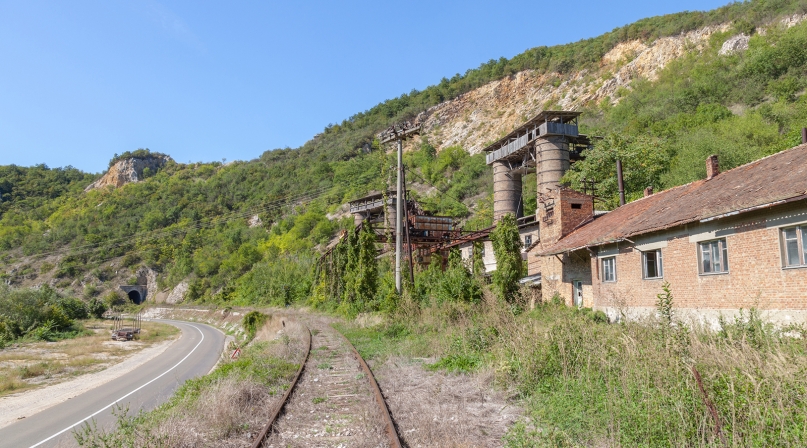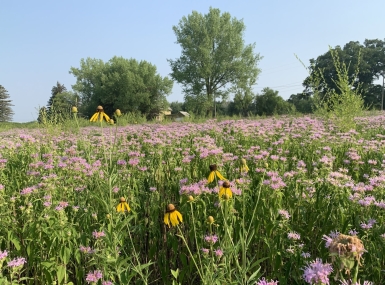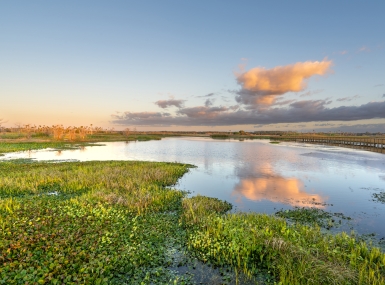New elements added to popular EPA program
Upcoming Events
Related News

EPA's brownfields grants program reauthorized at $80 million
The Environmental Protection Agency’s Brownfields Program was recently reauthorized when President Trump signed the $1.3 trillion FY2018 omnibus spending package.
Learn More
The EPA’s Brownfields Program, originally authorized in 2002 through the Small Business Liability Relief and Brownfields Revitalization Act, provides technical assistance and grants for local communities, including counties, to undertake brownfields redevelopment projects at old manufacturing and industrial facilities, abandoned mills and mines and areas with leaking underground storage tanks.
The FY2018 omnibus appropriations package provided $80 million for EPA’s brownfields project grant program, which is level funding with FY2017.
In addition to providing $80 million for the program through FY2018, the omnibus included a provision, supported by NACo, to reauthorize EPA’s Brownfields Program at a level of $200 million from FY2019 through FY2023. The program expired in 2006 and was funded by Congress annually since its expiration due to its bipartisan popularity.
The omnibus also included policy riders geared toward improving the EPA Brownfields program to help more sites undergo cleanup activities, such as:
- Expanding liability protections for voluntarily and involuntarily acquired brownfields sites for state and local governments;
- Creating multipurpose brownfields grants up to $1 million allowing communities to undertake multiple site brownfield projects under the same grant;
- Increasing funding for brownfields remediation clean-up grants from $200,000 to $500,000 per grant and allowing EPA to waive that limit up to $650,000 based on need;
- Classifying abandoned petroleum sites as brownfields if there is no viable responsible party, and if the EPA and the state determine the entity assessing and remediating the site is not liable to clean up the site. Close to half of brownfields are contaminated by leaking underground storage tanks like those found at unused gasoline stations;
- Increasing grant eligibility for non-profits and for publicly-owned brownfields sites acquired prior to Jan. 11, 2002;
- Capping administrative costs at 5 percent, while stipulating that administrative costs do not include investigation and identification, design of response plan or monitoring activities; and
- Providing small community technical assistance grants of $20,000 to states for communities with populations under 15,000 or in disadvantaged areas where the annual median household income is less than 80 percent of the state-wide annual median.
NACo has long supported reauthorization of EPA’s brownfields program and stands ready to work with Congress and the administration to ensure counties have the resources necessary to successfully redevelop brownfields sites across the country.
Congressional appropriators are already working on FY2019 spending levels, which must be set and passed before the current fiscal year ends on Sept. 30.
In February, Trump released his FY2019 budget request, which outlined the administration’s federal spending priorities for the next fiscal year. The president requested $62 million for the EPA’s brownfields program for FY2019, an $18 million cut from the $80 million appropriated in FY2017, though Congress will ultimately determine the final spending level for the program in FY2019.
Attachments
Related News

U.S. Department of Energy announces $18 million for Local Government Energy Program
U.S. Department of Energy announces $18 million for Local Government Energy Program

Sherburne County and tribal nations collaborate on county park
Sherburne County, Minn. engaged tribal nations to revise its plans for a park that included a Native American burial ground.

U.S. Army Corps of Engineers publishes memo on protection of non-jurisdictional waters and wetlands
U.S. Army Corps of Engineers memo directs civil works actions on water and wetlands in response to recent Waters of the United States (WOTUS) changes.